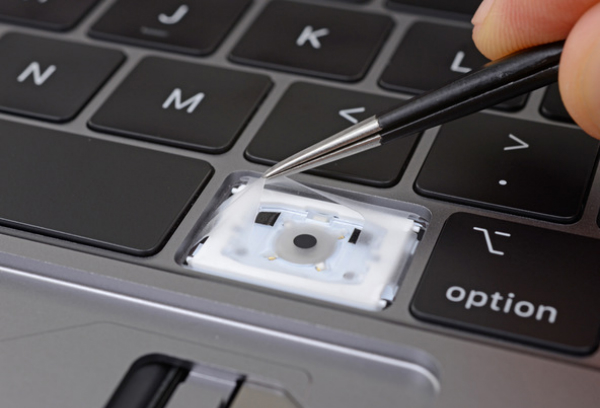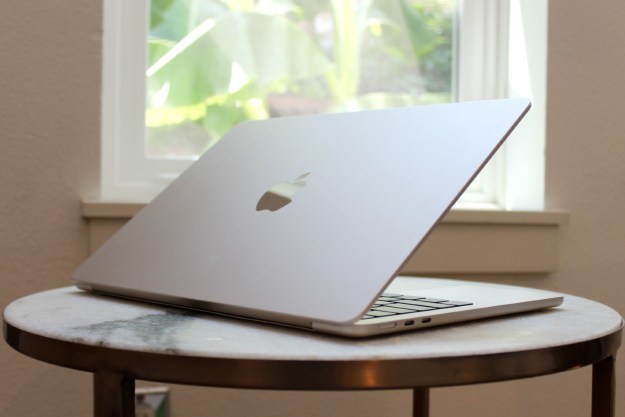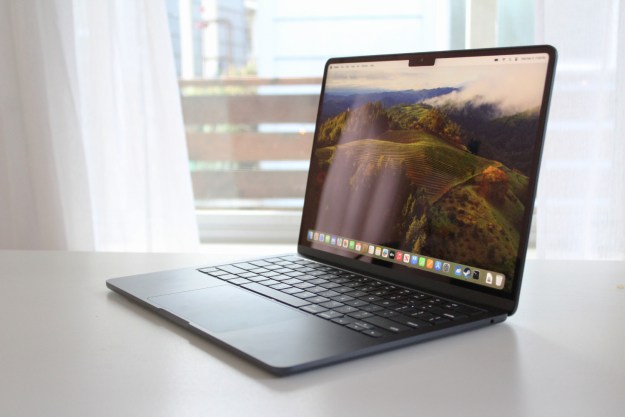
Even though Apple won’t publicly advertise that its quieter third-generation keyboard contains a fix for the sticky key issues plaguing older MacBook Pro models, the company’s support documents say otherwise. Since announcing the 2018 MacBook Pro, Apple has only promoted a quieter typing experience as a benefit of the new keyboard. In interviews, Apple had denied that its redesigned keyboard come with any fixes to address issues of unresponsive, repeating, or sticky keys that plagued the company’s older laptops, but a newly discovered internal document reveals that the design does address this widely reported keyboard problem.
Apple’s 2018 MacBook Pro Service Readiness Guide distributed to Canadian and European service providers acknowledged that the keyboard contains a membrane underneath each key to keep out dirt and debris. “The keyboard has a membrane under the keycaps to prevent debris from entering the butterfly mechanism,” the document, which was published on MacRumors, stated. “The procedure for the space bar replacement has also changed from the previous model.”
Similarly, Apple’s U.S. service document contains similar language. Apple also cautioned its U.S. service providers to not damage the membrane in any keyboard repairs, which “will result in a top case replacement.”
An analysis of Apple’s older second-generation keyboard with a similar butterfly key switch suggested that keyboard damage could result in expensive out-of-warranty repairs. Because of how the keyboard was integrated with the laptop’s enclosure, repair costs could go as high as $700. The high cost of repair coupled with the widely publicized keyboard failures on Apple’s MacBook and MacBook Pro notebooks resulted in several class-action lawsuits. Apple tried to address the problem by offering a free keyboard repair program on affected models regardless of warranty status. Users were still concerned that even if the keyboard was replaced, without a permanent engineering fix in place, the replaced keyboard could still suffer from a similar failure in the future.
Now, with the new third-generation keyboard design, it appears that Apple has delivered a permanent fix to the keyboard issues, but owners of MacBook Pro models prior to the 2018 refresh are out of luck. Apple had stated in the past that the new keyboard is exclusive to its 2018 MacBook Pro, meaning that it won’t use any parts from the third-generation keyboard in its repair program. If you own a late-2017 MacBook Pro model or earlier with unresponsive keys, Apple will not replace your second-generation keyboard with the new third-generation design. The replacement keyboard won’t come with a silicone membrane, so not only will you not benefit from a quieter typing experience, but your keyboard could still suffer from the same failure that warranted the initial repair.
For now, if you’re in the market for a MacBook Pro and are concerned with reliability issues, you may want to steer clear of Apple’s older models. Given that Apple did not refresh its non-Touch Bar versions of the MacBook Pro, you will also want to skip those configurations, as they don’t come with the new third-generation keyboard design.
Editors' Recommendations
- The XPS 16 is fighting an uphill battle against the MacBook Pro
- A new wave of powerful laptops rises to challenge the MacBook Pro
- The biggest threat to the MacBook this year might come from Apple itself
- Why you should buy a MacBook Pro instead of a MacBook Air
- Here’s more confirmation that 2024 will be a slow year for Macs


